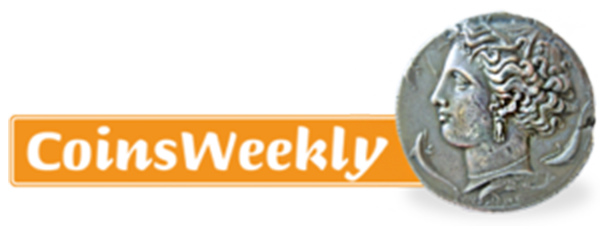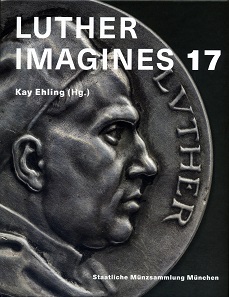by Ursula Kampmann
translated by Annika Backe
November 2, 2017 – It was with pleasure that many employees noted last Tuesday that even in the Catholic Federal States the 2017 Reformation Day was in fact a holiday on which nobody had to work. Whether this holiday served to reflect on the ideals of the reformer or just to sleep in isn’t something we want to dwell on here. We only want to present another, recently published book related to the Reformation Year, the elegantly designed catalog for the ‘Luther imagines 17’ exhibition, on display in the Munich Residence up until April 1,2018.
Kay Ehling (ed.), Luther Imagines 17. Staatliche Münzsammlung München, Munich 2017. 200 pages with color illustrations throughout, hardcover, 21.7 x 26.5 cm. ISBN: 978-3-922840-38-1. 15 euros.
Kay Ehling is the responsible editor of this publication. Anyone familiar with his books knows that the author is keen to not engage in numismatics for numismatics’ sake but, rather, to combine it with history. And that is precisely the strength of this catalog. It’s not only the numismatists who get a chance to speak.
The editor has chosen his co-authors with care. Among the writers is no one who had briefly informed himself on the topic after lunch on a Friday. They are researchers who have specialized in related topics for decades. Volker Leppin and Jörg Ernesti, both church historians – one with a Protestant background and the other with a Catholic background – deal with the occasion of the event, the 95 thesis and the onset of the Reformation. The ancient historian Alexander Demandt puts the Reformation, in terms of its significance, into the context of world history. Martin Wallraff presents traces of Luther in the Roman townscape. And the art historian Manuel Teget-Welz deals with the image of Luther as painted by Lucas Cranach.
The following four chapters focus on the Reformation jubilees from 1617, 1717, 1817, and 1917. The authors are Kay Ehling, Wolfgang Steguweit, and Benjamin Sommer. And only then, after nine well-conceived essays that are neither too long nor too short, begins the catalog on page 131, documenting the coins and medals displayed in the exhibition.
It hardly needs mentioning that the catalog entails exquisite photographs and thorough numismatic descriptions. With the State Coin Collection Munich, we take this for granted. However, so many and so comprehensive catalogs have been published that almost none of the medals depicted is truly completely unpublished. The editor is well aware of this problem. He did not intend to be exhaustive but to give “a selection which exemplifies of how the images and themes of Luther changed over the centuries.”
Kay Ehling has certainly accomplished this goal. This successful book is just what I would read in order to learn something on the background of the coins and medals featuring Luther.
You can order the catalog for a modest 15 euros by sending an e-mail to the State Coin Collection.





